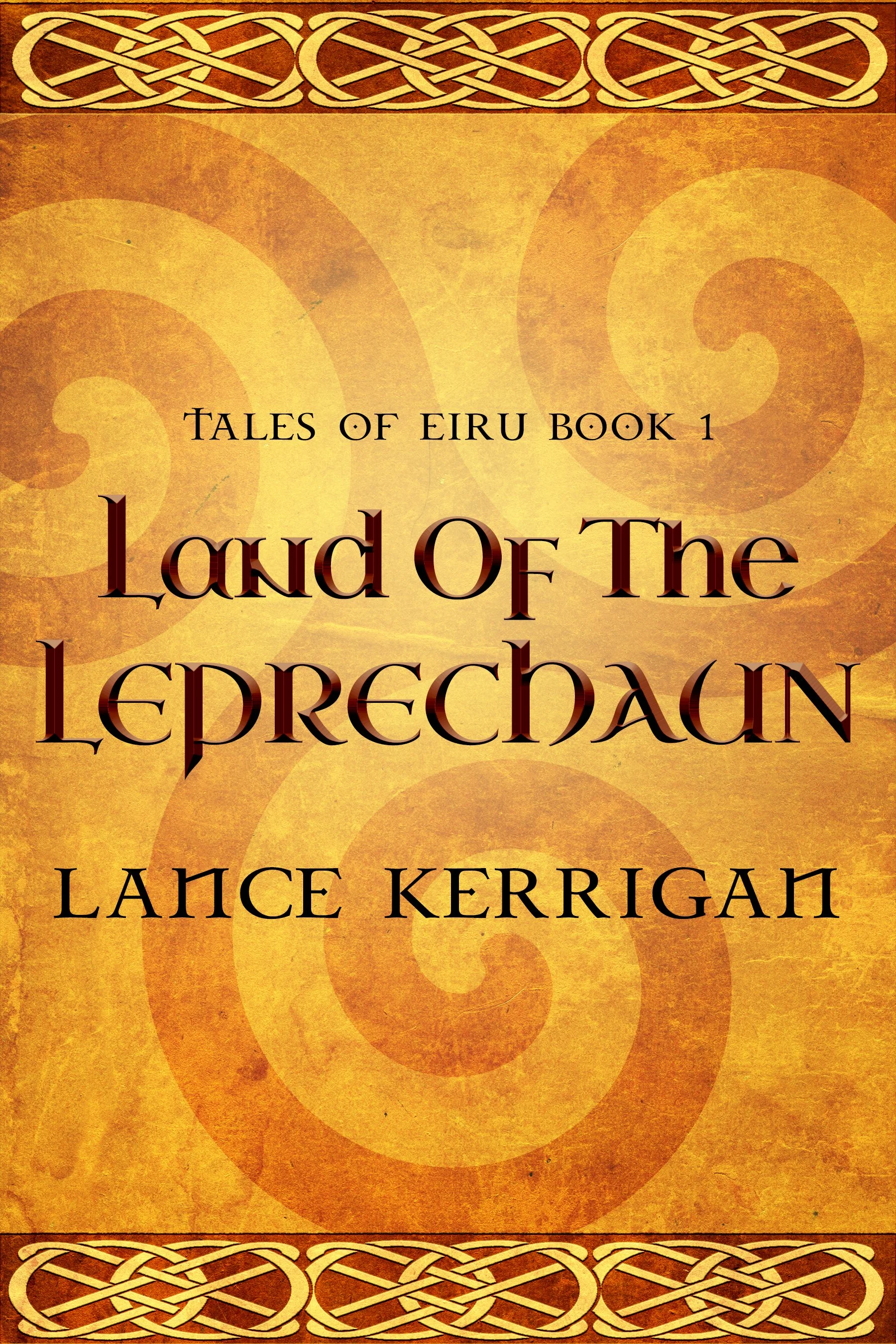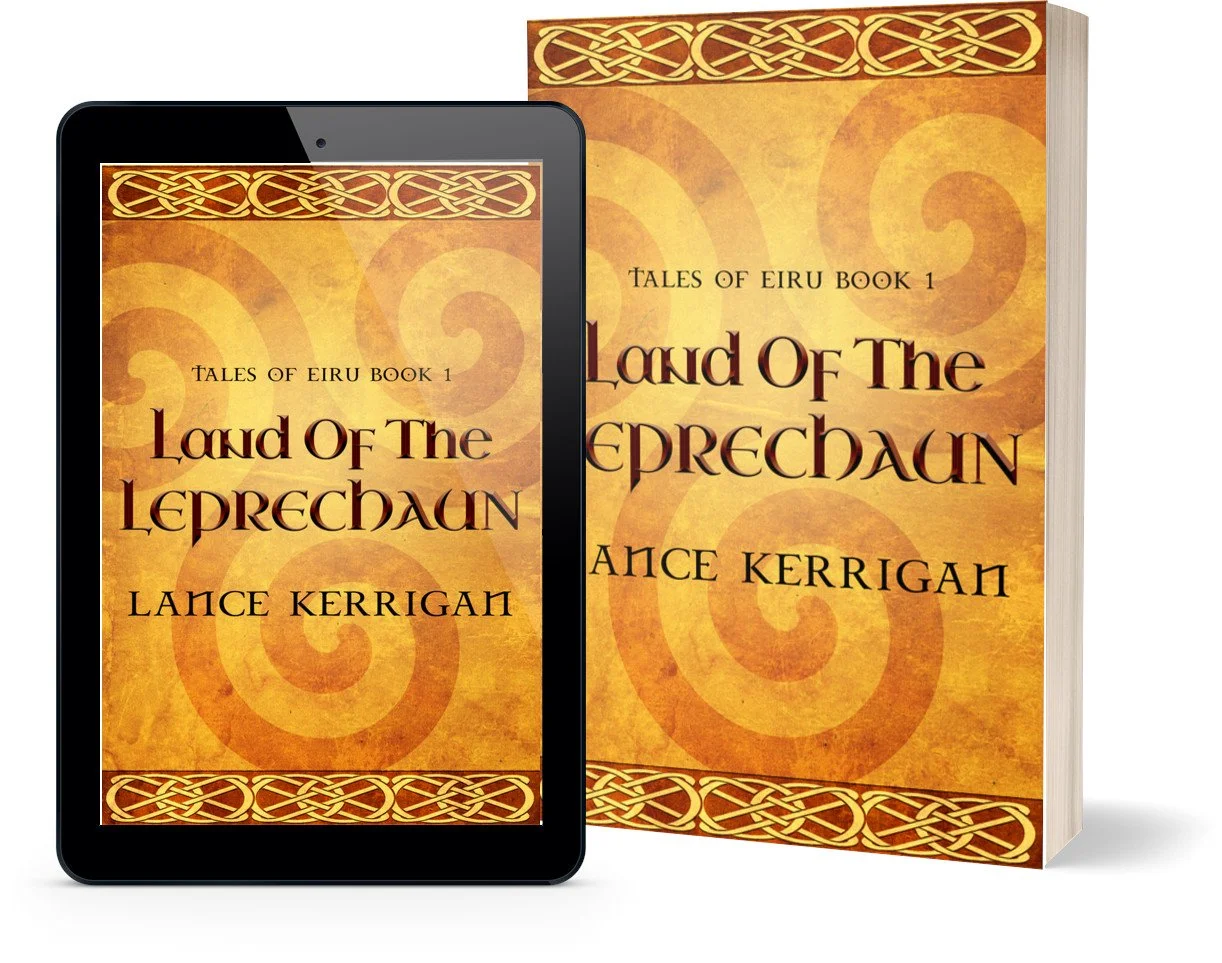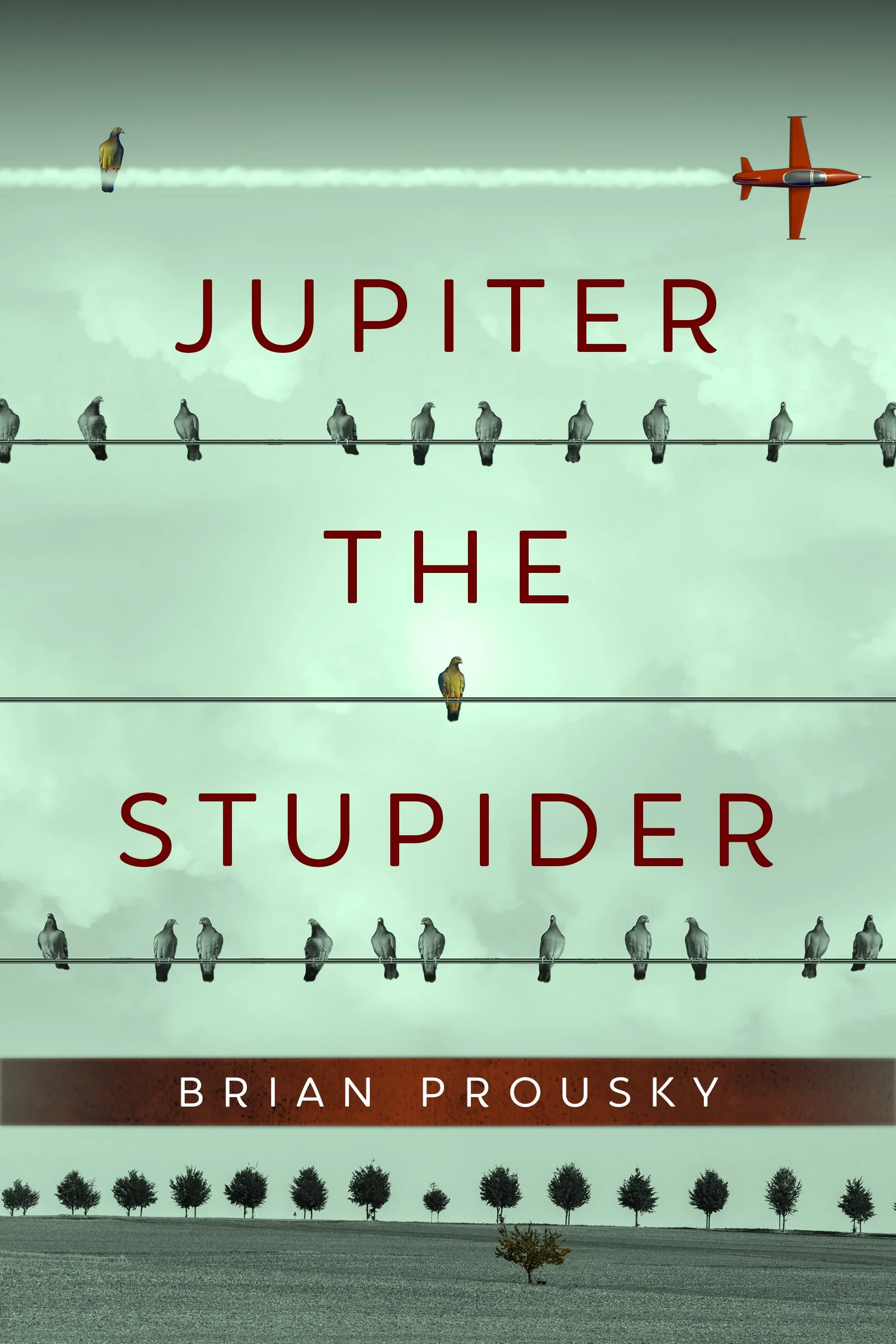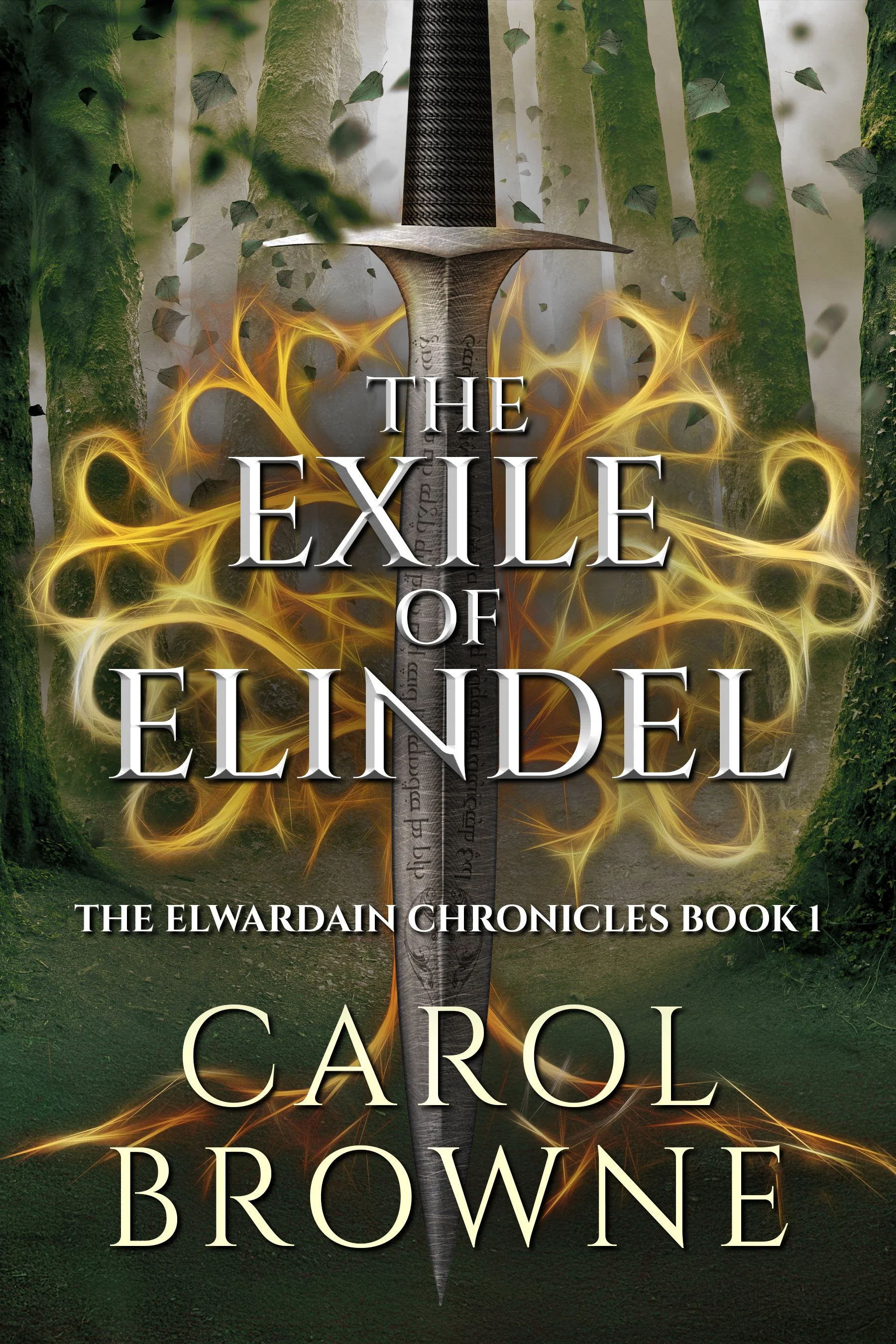Land of the Leprechaun (Tales of Eiru Book 1) - Lance Kerrigan
Land of the Leprechaun (Tales of Eiru Book 1) by Lance Kerrigan
Book excerpt
Chapter 1: Hunter Hunted
Still and quiet. The leaves glisten in the light autumn breeze whilst the landscape is draped in a golden cloud of fog, illuminated by the beautiful sunrise through the half-bare branches. The forest floor is covered in a snow of browns, reds and yellows— leaves of similar shape, yet various sizes, much from a kindred species. Suspended over an idle stream, the fog thickens to the point that it almost camouflages a young deer slurping from the mirror-like surface. His breath mist swirls slowly before immersing into the fog. Perfect tranquility for any mammal to enjoy the privacy of a crisp pre-winter morning, with the only sounds of a single robin chirping its post-dawn chorus on a nearby branch. Nearby undergrowth rustles and echoes across the forest, capturing the undivided attention of a now prudent buck glaring at its surroundings. Passively he returns his attention to the water.
WOOSH! Crack!
An arrow pierces the bark of a nearby birch, inches from a now startled deer, who wastes no time scarping off into the woods. His natural response is almost always flight, not fight.
“Fuck! Don’ stand gawping…CHARGE!”
A group of men storm from the bushes with Bowes chasing the path of the jolting deer. The tran-quility of the forest is lost in the thunders of shouts, cheers and scuffling. Trampling along a swampy surface creates a reverse monsoon of mud and water, flying in every direction, colliding from head to toe, painting their bodies like a canvas. But this only adds to the gratification of the chase.
How can they expect to catch up, two legs against four? But these are not ordinary men; they are barely taller than an infant. Their tiny heads are barely visible above the extended growth of red-dish-green ferns. Too mature, too masculine to be children, yet too short to be adults. Despite their size, they run at an accelerated pace, not seen in anything human. Their little legs a blur, only visible when strides are knocked out of sync with a hop and a slip. This visibility increases as they become weighted down by saturated woolen green garments now darkening with mud splashes. One clumsy younger-looking redhead trips on an entangled cluster of heather and crashes into the spongey earth, sinking slightly. His expression is nauseating, fretting, while his comrades, dodge, jump and trample over him, leaving him further behind in the action. Pulling himself together, he scrambles to his feet and waddles on and reversing his glumly frown, he bolts forward, catching pace in a blur. Unlike other fairies, these creatures walk like humans, talk like humans and live almost like humans. The perks of leprechaun are speed and stealth, making the hunt all thrill, not a necessity.
Sweeping through the wilderness, they charge proud and brave, true hunters. Blinded by the rising sun directly in their path, they continue to move forward. The front runners smack branches out of their faces, catapulting them back against the next.
Suddenly everything around them is illuminated. Squinting hard, they come to a gliding halt, find-ing themselves in open pasture, the deer not too far, only a pace ahead, prancing for its life. Speed and sawtooth waving are its only defence. Perhaps effective on other carnivores, but for the lepre-chaun, merely a requirement for more strategic use of a bow and arrow. This zig-zag pattern might prove difficult if it were not so predictable that any experienced huntsman could, with confidence, see this as a near clean shot.
“Wait! He’s mine,” proclaims one of the men.
His superiority is demonstrated not only in his modulated voice but in his gracious prowl as he moves to the front of the group. Even under a layer of sweat and mud, his boyish good looks bare the hallmarks of a prince. Well-groomed and nourished, even his lavish emerald silk garments are not worse for wear. Standing straight, he sets his bow and focuses on his target. He’s confident without provocativeness, to the point that much of his flaunting is less about showing off and more about proving his worthiness to his companions. Despite being his subjects, some in his ranks regard his arrogance as the former. They take pleasure when he misses as the arrow shoots too far right, not even close to the intended target.
“Shit,” the prince mutters. He gasps in disbelief at yet another uncharacteristic miss. His subjects wonder whether they should laugh or rally. But this is not the only unusual behaviour on site. That of a black crow swoops over them, landing on a nearby tree. Keeping a discrete distance, it hawk-eyes the group to the point where the hunter may become the hunted. It caws loud enough to dis-rupt the prince’s third drawing. Just at launch, the arrow deliberately shifts direction.
“Loosin’ yor touch Enda,” blurts one of the men.
“Watch your tongue,” snaps the prince.
He becomes increasingly impatient before demanding everyone move forward as he hurries down the valley to reposition before the deer is lost to the forest. The crow follows, but swooping a little too close it is swished away by one of the men. The crow retreats to a nearby tree. Enda takes one sudden hold. Steadily positioning the nock against the bowstring, he pulls slowly. Rising the bow, he takes a deep, calm breath, eyes locked on his target. His bicep wobbles slightly before he forces it tight, then positions his line of sight along the shaft, fixated on the galloping prize. The atmosphere is tense, everyone holding their breath, frozen at the risk of generating a distracting tone. The only sound is the distant thump of the deer’s galloping hooves making brief contact with the ground, in sync with Enda’s heartbeat. A single drop of sweat trickles down his brow and sparkles in the sun-light. Enda releases the arrow. Cutting through the air, the head and fletch rotate. Everyone gasps. Feeling like an endless linger, eyes fixated on its trajectory. Then—
“Hurray!”
The crow, still surveying the commotion, flaps its wings and flies across the valley a little further towards the horizon. It is guided by a light breeze carrying the voices where a nearby settlement can pick up the faint sounds of celebration. The twins, on the high side of a ha-ha’ wall, lend an ear northwards.
“Sounds like dinner’s caught,” says Fionn casually while returning to their archery. Oisin prises an arrow from an elm log slice leaning against a stack of freshly cut timber. Fionn, in a ready-to-shot position, teases an attack.
“Don’ you dare,” Oisin snaps affectionately while dodging a half-heartedly fired arrow.
The twins possess a strong sibling bond, but they hold something more unique; being twins creates an even greater bond beyond any understanding. A single entity of two independent bodies. No one could mistake their striking similarity, possessing youthful, clean-cut faces. Their skin shines a healthy pale tone, typical of outdoor country boys on an island that experiences little summer. Their dark amber hair is the only feature that distinguishes them. Fionn wears his long, brushed to one side, covering half his face, a charming, bold look—a reflection of his personality.
On the other hand, Oisin’s is a more refined, neat cut for a modest character. These personalities ex-hibit openly in their body language. They both stand confident, but Fionn portrays a suave presence, with a cheeky smile and mysterious eyes. Oisin is a trustworthy presence with a toggled introvert expression. You can tell from his approachability and blue eyes he is someone who could warm even the coldest hearts with one wide smile.
“Let’s see yea try hittin’ the trunk t’is time,” taunts Fionn, demonstrating who is alpha, or at least acts as such. Despite the differences, they live, work, sleep and socialise as a pair rather than as in-dividuals, experiencing every milestone together. To the world, they hold the perfect twin mystique and are dependent on each other for everything life sends their way.

















Praesent id libero id metus varius consectetur ac eget diam. Nulla felis nunc, consequat laoreet lacus id.